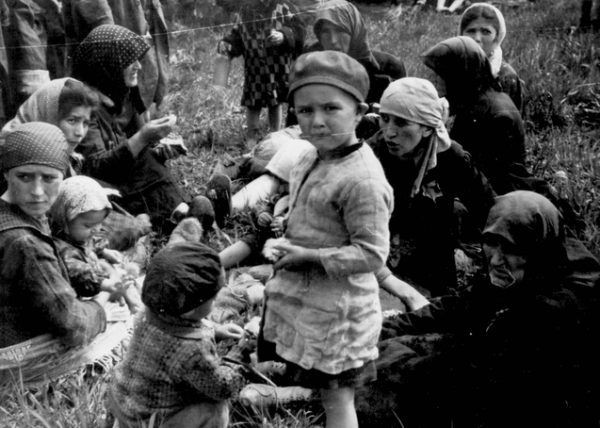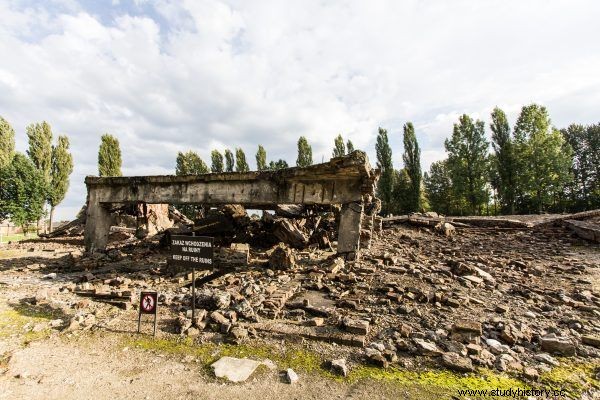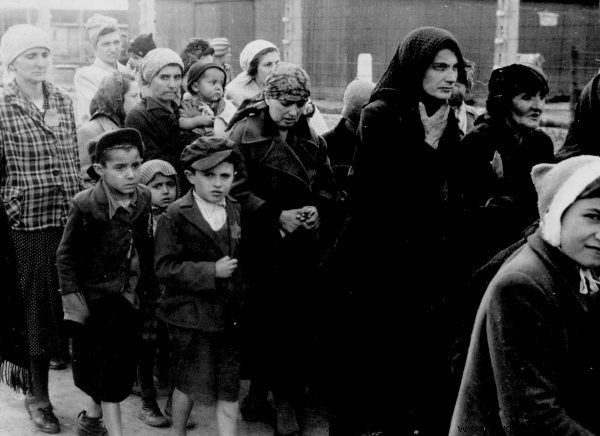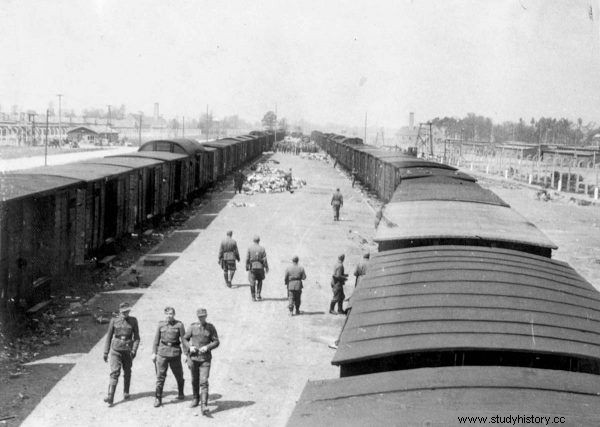Five million? Four? Or maybe "just" a million? How many people did the Germans brutally murder in the Auschwitz camp? And how many of them were Jews? For decades, the misrepresented number of victims of the Nazi death factory has been officially reported. So what was it really like?
At the end of 1939, the security police inspector from Wrocław, SS-Oberführer Arpad Wigand, proposed that, in view of the overcrowding of arrests and prisons in Silesia, the opening of a new concentration camp to which convicts could be sent. In his place, he chose the Zasole district of Oświęcim. Why exactly there? It housed the barracks of the Polish Army - so at least some of the infrastructure was ready.
The idea was quickly accepted by the authorities and on April 27, 1940, Reichsführer-SS Heinrich Himmler issued an official order to establish KL Auschwitz. It was originally supposed to be an "ordinary" place of detention of Polish political prisoners more and more each month. With time, however, people of other nationalities, Soviet prisoners of war, and, finally, Jews were sent to him.
Main extermination site
When in 1942 the Germans set about implementing the so-called Final Solution of the Jewish Question, the Auschwitz camp gained importance. It was expanded, equipped with tools for mass killing of people (gas chambers and crematoria), and then transports of Jews began to be directed there. Their destiny? Death.
First, those from the vicinity of Oświęcim were brought:Będzin, Sosnowiec, and Dąbrowa Górnicza. Later, prisoners from other parts of Poland appeared. Finally also from Slovakia, the Protectorate of Bohemia and Moravia, Germany, Austria, France, Belgium, the Netherlands, Norway, Italy, Yugoslavia and Greece. Most of the people were led directly from the trains to the gas chambers the rest were registered and placed in the camp.

Initially, Auschwitz was to be an "ordinary" camp for Polish political prisoners. However, it quickly turned into the largest Nazi death factory.
As British historian Laurence Rees describes in his book "Holocaust. A new story ” :
The SS men started the selection process on the dusty ground next to the railway line, halfway between the main camp and Auschwitz-Birkenau. In this area, known as the "ramp," SS medical personnel spent a few seconds assessing each newcomer, and sent those selected for forced labor to one side and those to be gassed on the other.
The bodies of those killed in the gas chambers were burned at the stake and then in the crematoria. From 1943, KL Auschwitz became the main and largest center for the extermination of European Jews. The criminal activity reached its peak in the summer of 1944 during the so-called Hungarian action.
" About 430,000 Hungarian Jews were transported to Auschwitz between May and July 1944. (...) 70 to 90 percent of each transport was selected for immediate death. In order to accommodate such a huge number of victims, huge combustion pits were dug near crematoria and gas chambers IV and V ”- we read in Rees's book. The gas chambers of KL Auschwitz were in operation until the end of October 1944.
4 million - but are you sure?
After the camp was liberated by the Red Army in January 1945, the Extraordinary Soviet State Commission for the Investigation of the Crimes of German-Fascist Aggressors began documenting it. She made an attempt to establish the number of victims of the camp.
As German documents were missing (they were destroyed by the crew), the commission members relied on the testimonies of the survivors (including members of the Sonderkommando) and the captured SS men, as well as the partially preserved infrastructure of the death factory. How? They counted the furnaces in the crematoria, determined their daily capacity and the period of operation. From simple multiplication they got 5 million.
Assuming that the crematoria did not work all the time, they roughly deducted a fifth. Thus came the figure of 4 million victims, 90 percent of whom were to be Jews . Similar data was provided by the former camp commandant, Rudolf Höss, who stated before the International Military Tribunal in Nuremberg that 3 million people had died in Auschwitz. He later withdrew from it, but his original testimony was repeatedly cited as the key piece of evidence in the discussion of the number of murdered in Auschwitz.

Before its liberation, the camp staff destroyed the documentation and some buildings.
The number of 4 million killed by the Russians, established - and in principle estimated - was accepted by the Main Commission for the Investigation of German Crimes in Poland and permanently entered scientific studies, textbooks and the press. It was also found at the International Monument to the Victims of the Camp, unveiled in April 1967 in Brzezinka (Auschwitz II Birkenau).
Although some historians and researchers questioned the Russian estimates, their opinions were not taken into account. According to Bohdan Piętka from the Research Center of the Auschwitz-Birkenau State Museum, the first accusation of overestimating the number of victims was made in 1946 by the director of the Central Jewish Historical Commission, Polish-Jewish historian Natan Blumental. He claimed that between 1.3 and 1.5 million people were murdered in the camp .

Only 400,000 of the 1.3 million people brought to the camp were registered and sent to forced labor. Half of them died of starvation and exhaustion.
There were more skeptics. The British politician Michael Foot, the Israeli historian Erich Kulka, Professor Czesław Madajczyk, an expert on the issues of the German occupation in Poland and Professor Jan Sehn, representative of the Minister of Justice for the prosecution of Nazi criminals, also spoke about the overestimation of the number of deaths. In 1961 the American researcher Raul Hilberg calculated that "only" one million Jews died in Auschwitz . In turn, the 1974 "Encyclopaedia Judaica" published in Jerusalem stated that the number of victims ranged from 1 to 2.5 million people, with the former being considered more likely.
Symbol of Doom
Nevertheless, the number of 4 million murdered was accepted as official - and it quickly became a gloomy symbol of the pogrom. It was shocking with its size and clearly showed the atrocities of the Nazi crimes. On the other hand, it caused reasonable doubts . Because, as Bohdan Piętka states:“This number (…) deformed the obtained results of statistical calculations. First of all, it was not included in the balance of biological losses of Jews during the Second World War. ”
Subsequent historians made attempts to verify it. The most important findings were made in the early 1980s by a French researcher and former prisoner of the camp, Georges Wellers . He used data on the losses in the population of the countries from which people were deported to Auschwitz and the "Calendar of events in KL Auschwitz" prepared by Danuta Czech. He found out that a total of 1.6 million people were transported to the camp, of which 1.5 million died. So much less than commonly agreed.
Dr. Franciszek Piper, a longtime employee of the Auschwitz-Birkenau State Museum, also conducted his own research. He compiled various estimates and analyzed them. He also proposed a new enumeration. He assumed that out of all Jews brought to the camp, 180,000 were sent to work, which constituted 10 percent of all prisoners. Thus, the number of those murdered was approximately 1.8 million.
The problem is that later Dr. Piper, following other researchers, assumed that the first selection "passed" "positively" not 180,000 but as many as 400,000 people . How many, then, were sent to death in the gas chambers at once?
The Tomb of Many Nations
Contrary to the belief in German scrupulousness, prisoners from many transports arriving in Auschwitz were not registered at all, but were directed to gas from the cattle cars. So there are no lists of them - not even estimates. Piper was saved only by lists of transports drawn up illegally by the camp conspiracy, as well as documents from the countries from which the Jews were transported. There were usually meticulous registers.
Painfully compiling all these data, Franciszek Piper established years later that at least 1.3 million people (mostly Jews) were sent to Auschwitz, of whom 1.1 million lost their lives. . 400,000 of them were included in the registers of forced camp workers. Over time, even half of the registered prisoners lost their lives due to starvation, disease and excessive work.
He announced his conclusions in the early 1990s in the book How many people died in KL Auschwitz. The number of victims in the light of sources and research 1945–1990 ”. His calculations have been recognized by Polish and world science. The figure of 1.3 million (alternatively:"about a million") has found its way into scientific studies, books, articles. The inscription on the monument in Birkenau was also changed.

Many Jews were sent to the gas chambers directly from the trains, so today it is difficult to precisely define the number of victims of the camp.
So how many Jews really died in Auschwitz? According to the most recent findings about 1.1 million of them were brought to the camp (including 300,000 Poles). 200,000 of them were registered as prisoners and sent to forced labor (there were about the same number of workers of other origins). The rest were killed in the gas chambers as soon as they were brought to the place of execution. In total, about one million Jews died.
What about the rest? Out of 140–150,000 imprisoned Poles, about 70–75,000 lost their lives, out of 23,000 Roma, more than 21,000 died, and out of some 15,000 Soviet prisoners, almost all were murdered. In addition, approximately 25,000 prisoners of other nationalities passed through the camp:Ukrainians, Belarusians, Czechs, Yugoslavs, Dutch, Belgians, French, Germans and Austrians. Regardless of whether the victims were 4 million or "only" a million, the scale of the crime remains monstrous.
